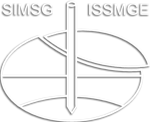The use of mining and incinerated municipal solid wastes in the construction of transportation infrastructures
The use of mining and incinerated municipal solid wastes in the construction of transportation infrastructures
Road and railway infrastructures often require building large embankments and other soil layers using suitable materials. In order to promote the concept of circular economy in real practice, it is becoming increasingly important to use non-conventional geomaterials in geotechnical works. In view of the fact that modern societies produce significant amount of wastes for its development, this paper focus on the use of two different types of waste (bottom ashes from incinerated municipal solid waste and ore tailings) for embankment construction for transportation infrastructures, using physical modelling as an experimental tool.
The model layers, aiming at representing the top of the embankments or other shallow layers of transportation infrastructures, are compacted in a container using realistic methods and tested under a vertical cyclic load simulating the load imposed by vehicles, to assess the vertical deformations imposed on these layers with the progression of the loading cycles. Different geomaterials are tested to have a preliminary and qualitative assessment of the behaviour of the selected waste in comparison to other more conventional geomaterials.
Considering that the wastes tested perform fairly satisfactorily in comparison to the soils tested, it seems viable to implement the concept of circular economy in the construction of transportation infrastructures, provided that more sophisticated tests confirm this preliminary results and environmental impacts are properly controlled.
Paulo Coelho; David Camacho
5th European Conference on Physical Modelling in Geotechnics (ECPMG2024)
Geotechnical infrastructure
https://doi.org/10.53243/ECPMG2024-22
